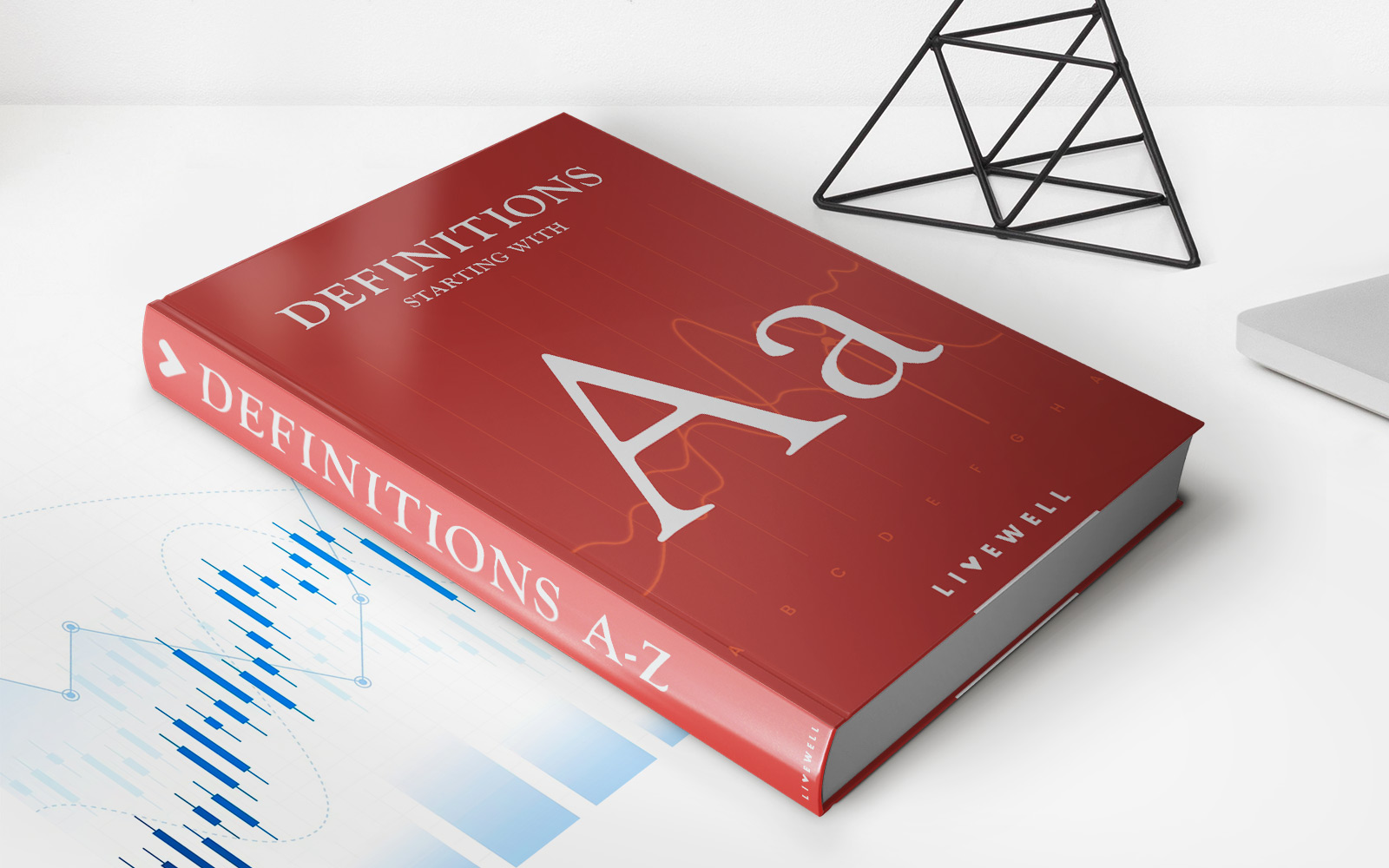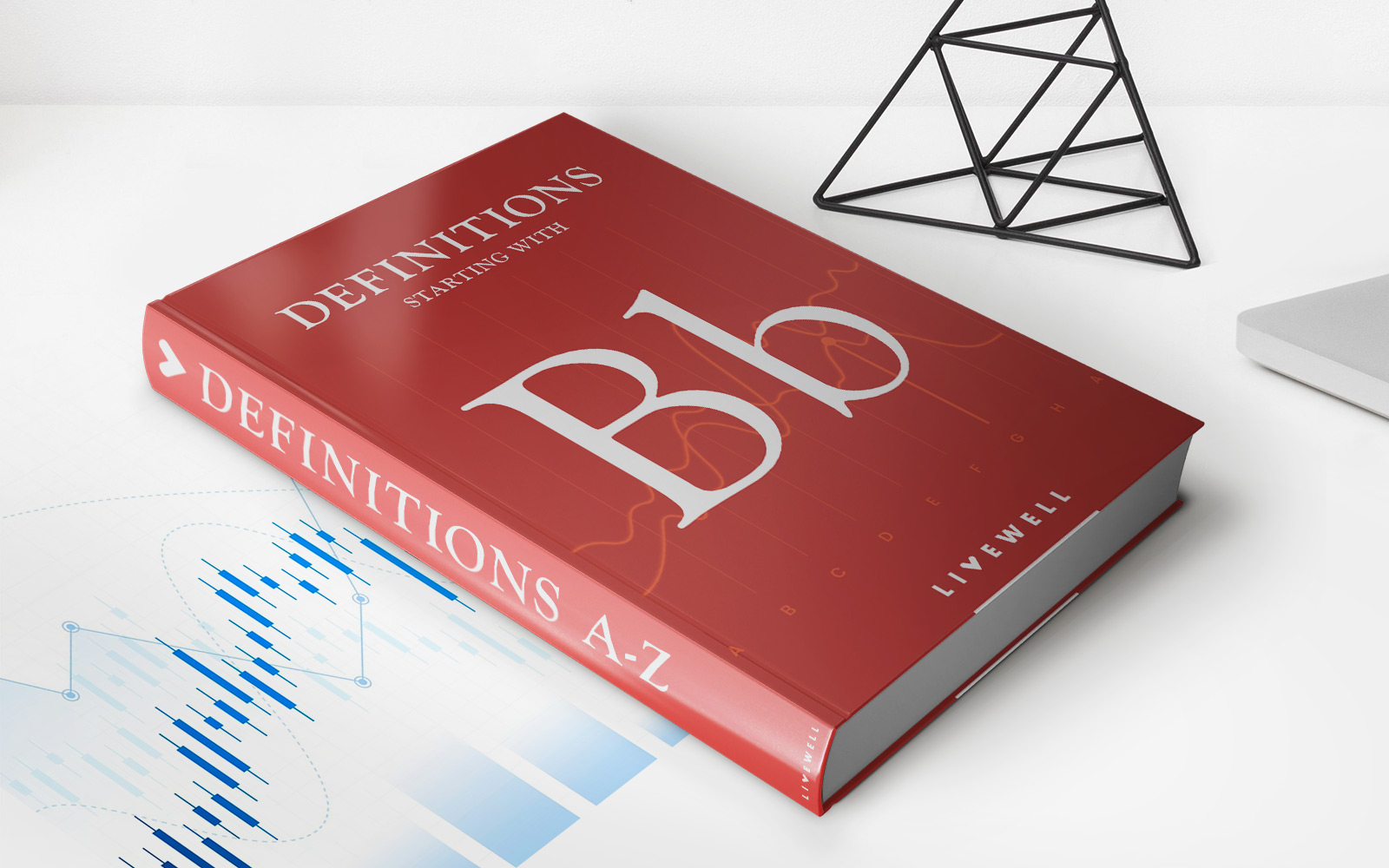

Finance
What Is An Insurance Adjustment?
Published: November 14, 2023
Learn about insurance adjustments and how they can impact your finances. Find out what they are and how they work in this informative guide.
(Many of the links in this article redirect to a specific reviewed product. Your purchase of these products through affiliate links helps to generate commission for LiveWell, at no extra cost. Learn more)
Table of Contents
Introduction
Welcome to the world of insurance! Whether you are a policyholder or an insurance professional, you have likely come across the term “insurance adjustment” at some point. But what exactly does it mean? In this article, we will delve into the concept of insurance adjustments, exploring their definition, purpose, types, process, and importance in the realm of insurance.
An insurance adjustment refers to the evaluation and assessment of a claim made by a policyholder against an insurance policy. It involves determining the coverage, validity, and amount of compensation that should be provided to the policyholder to help them recover from a loss or damage covered by the insurance policy. Put simply, it is the process of settling a claim between the insurance company and the policyholder.
The primary purpose of insurance adjustments is to ensure fair and accurate compensation for the policyholder, while also protecting the interests of the insurance company. When incidents such as accidents, natural disasters, or property damage occur, policyholders rely on their insurance policies to mitigate financial losses. Insurance adjustments play a crucial role in this process, as they facilitate the smooth resolution of claims and help policyholders get back on their feet.
There are several types of insurance adjustments that can be made, depending on the nature of the claim and the specific insurance policy. One common type is property insurance adjustments, which involve assessing the damage or loss to a property and determining the appropriate compensation to the policyholder. Another type is auto insurance adjustments, which focus on assessing the damages and injuries resulting from vehicle accidents.
Definition of Insurance Adjustment
An insurance adjustment refers to the process of evaluating and settling a claim made by a policyholder against their insurance policy. It involves determining the coverage, validity, and amount of compensation that should be provided to the policyholder to help them recover from a loss or damage covered by the insurance policy.
When a policyholder experiences an incident that falls within the scope of their insurance policy, such as a car accident, property damage, or a medical emergency, they file a claim with their insurance company. The insurance company then initiates the insurance adjustment process to determine the extent to which the claim is covered and the appropriate amount of compensation.
The insurance adjustment process requires careful examination of the policyholder’s claim and the circumstances surrounding it. An insurance adjuster, who is an employee of the insurance company or an independent professional, is assigned to assess the claim. They gather relevant information, such as medical records, police reports, and documentation of damages, to evaluate the validity of the claim.
During the adjustment process, the adjuster also reviews the insurance policy to understand the coverage limits, deductibles, and any exclusions that may apply. They compare the policy provisions to the specific details of the claim to determine if the loss or damage is covered and to what extent.
Once the assessment is complete, the adjuster prepares a report outlining their findings and recommendations. This report serves as a basis for negotiation between the insurance company and the policyholder to reach a settlement. The goal of the adjustment process is to provide fair compensation to the policyholder, ensuring that they are adequately reimbursed for their losses while adhering to the terms of the insurance policy.
It is important to note that an insurance adjustment is not the same as an insurance claim. An insurance claim refers to the initial notification made by the policyholder to the insurance company about a loss or damage. The insurance adjustment, on the other hand, is the subsequent process of evaluating and settling that claim.
In summary, an insurance adjustment is the process by which an insurance company evaluates a claim and determines the appropriate compensation to be provided to the policyholder. It is a crucial step in the insurance claims process, ensuring that policyholders are fairly compensated for their losses and helping them recover from unfortunate incidents.
Purpose of Insurance Adjustments
The primary purpose of insurance adjustments is to ensure fair and accurate compensation for the policyholder, while also protecting the interests of the insurance company. These adjustments serve several important functions in the insurance ecosystem:
1. Fair compensation: Insurance adjustments are designed to ensure that policyholders receive the appropriate compensation for their losses. When policyholders file a claim, they expect to be reimbursed for the damages or losses covered by their insurance policy. Through the adjustment process, insurance companies evaluate the claim and determine the extent to which the policyholder is entitled to compensation.
2. Policy adherence: Insurance adjustments help ensure that the insurance company adheres to the terms and conditions outlined in the policy. The insurance adjuster carefully reviews the policy provisions and compares them to the specific details of the claim to determine if the loss or damage falls within the coverage limits and if any exclusions apply. This ensures that the insurance company only pays out for valid claims and mitigates the risk of fraudulent or invalid claims.
3. Risk management: Insurance adjustments help insurance companies manage their risks effectively. By thoroughly assessing claims and determining appropriate compensation, insurance adjusters contribute to maintaining the financial stability of the insurance company. They help identify patterns, trends, and areas of higher risk, which can inform future underwriting decisions and pricing strategies.
4. Client satisfaction: Insurance adjustments play a crucial role in maintaining positive customer relationships. When policyholders experience a loss or damage, they look to their insurance company for support and assistance. A fair and efficient adjustment process instills confidence in policyholders, showing them that their claims are taken seriously, and that they will be treated fairly. This can lead to increased customer satisfaction and loyalty.
5. Legal compliance: Insurance companies are subject to regulatory requirements and laws governing the insurance industry. Insurance adjustments ensure that these companies remain compliant with these regulations and laws. Adjusters must follow industry guidelines and established standards in evaluating and settling claims, which helps protect the interests of both policyholders and insurance companies.
In summary, insurance adjustments serve the purpose of providing fair compensation to policyholders, ensuring policy adherence, managing risk, enhancing client satisfaction, and maintaining legal compliance. They play a vital role in the insurance ecosystem by facilitating the resolution of claims and helping policyholders recover from losses covered by their insurance policies.
Types of Insurance Adjustments
Insurance adjustments can vary depending on the type of insurance policy and the nature of the claim. Here are some common types of insurance adjustments:
1. Property Insurance Adjustments: Property insurance adjustments are one of the most common types. They involve assessing claims related to damages or losses to properties, such as homes, buildings, or personal belongings. These adjustments consider factors like the cause of damage (fire, flood, theft, etc.), the extent of the damage, and the cost of repair or replacement. Property insurance adjustments also take into account policy limits, deductibles, and depreciation.
2. Auto Insurance Adjustments: Auto insurance adjustments come into play when policyholders file claims for damages or injuries resulting from vehicle accidents. Adjusters evaluate factors such as the cause of the accident, the extent of the damage, the medical expenses incurred, and any lost wages. They also consider the policy limits, deductibles, and any applicable exclusions or coverage restrictions.
3. Liability Insurance Adjustments: Liability insurance adjustments focus on claims made against policyholders for causing harm or injury to others. These adjustments involve investigating the circumstances surrounding the incident, assessing liability, and determining the appropriate compensation to be paid to the injured party. Liability insurance adjustments are common in professional liability, general liability, and product liability insurance policies.
4. Workers’ Compensation Adjustments: Workers’ compensation adjustments deal with claims made by employees who have been injured or have become ill due to work-related activities. Adjusters evaluate the extent of the injury or illness, the medical treatment required, and the impact on the employee’s ability to work. They also consider any wage replacement benefits and ongoing medical care needed by the employee.
5. Health Insurance Adjustments: Health insurance adjustments focus on claims related to medical expenses incurred by policyholders. These adjustments involve assessing the validity and necessity of medical treatments, the coverage provided by the policy, and any co-pays or deductibles that apply. Health insurance adjustments also consider pre-approvals, network providers, and any limits or exclusions outlined in the policy.
It is important to note that these are just a few examples of the types of insurance adjustments that exist. The specific types and categories of adjustments can vary depending on the insurance company and the policies they offer. Insurance adjustments are tailored to the specific coverage and provisions outlined in each policy, ensuring that claims are evaluated appropriately and policyholders receive fair compensation for their losses.
Process of Insurance Adjustments
The process of insurance adjustments involves several steps that are followed to evaluate and settle a claim. Here is an overview of the typical process:
1. Claim Initiation: The policyholder initiates the insurance adjustment process by filing a claim with their insurance company. This can be done through various channels, such as phone, email, or an online portal. The policyholder provides details about the incident, including the date, time, location, and a description of what occurred.
2. Assignment of an Adjuster: The insurance company assigns an adjuster to the claim. This can be an in-house adjuster or an independent adjuster contracted by the company. The adjuster is responsible for conducting a thorough investigation and assessment of the claim.
3. Information Gathering: The adjuster collects all the pertinent information related to the claim. This may include gathering police reports, medical records, photographs, interviews, and any other relevant documentation. They also review the insurance policy to understand the coverage limits, deductibles, and any policy exclusions that may apply.
4. Inspection and Assessment: If necessary, the adjuster visits the location of the incident or inspects the damaged property to assess the extent of the damage. They may also consult with experts, such as engineers or medical professionals, to obtain their opinions or expertise in evaluating the claim.
5. Evaluation of Coverage: The adjuster examines the claim in relation to the policy coverage. They determine if the loss or damage falls within the scope of the policy and if any exclusions or limitations apply. They also consider any deductibles or co-pays that the policyholder may be responsible for.
6. Quantifying the Loss: The adjuster calculates the value of the loss or damage. This may involve obtaining estimates for repairs or replacement costs, assessing the value of items lost or damaged, and considering any additional expenses incurred as a result of the incident, such as temporary accommodation or rental car fees.
7. Negotiation and Settlement: Once the adjuster has completed their evaluation and quantified the loss, they engage in negotiation with the policyholder or their representative. The goal is to reach a fair and mutually agreeable settlement amount. The adjuster takes into account the policy provisions, industry standards, and the specifics of the claim during this process.
8. Issuance of Payment: After a settlement has been reached, the insurance company issues payment to the policyholder. The payment is typically based on the agreed-upon amount and is made within a specified timeframe, as outlined in the insurance policy.
9. Claim Closure: Once the settlement has been disbursed, the claim is considered closed. The policyholder and the insurance company no longer have any outstanding obligations with respect to the specific incident covered by the insurance adjustment.
It’s worth mentioning that the process outlined above is a general guideline, and the specific steps and procedures may vary depending on the insurance company and the type of claim being adjusted. However, the overall objective remains the same – to diligently evaluate the claim, establish fair compensation, and ensure a satisfactory resolution for all parties involved.
Factors Affecting Insurance Adjustments
Insurance adjustments are influenced by various factors that can impact the evaluation and settlement of a claim. These factors can differ depending on the type of insurance policy and the specific circumstances of the claim. Here are some common factors that can affect insurance adjustments:
1. Policy Coverage and Limits: The terms and conditions outlined in the insurance policy play a significant role in determining the scope of coverage and the applicable limits. Insurance adjusters carefully review the policy provisions to determine if the loss or damage falls within the coverage and if any limitations or exclusions apply. Policy coverage and limits dictate the maximum amount that can be paid out for a claim.
2. Documentation and Evidence: The availability and quality of documentation and evidence provided by the policyholder can impact the insurance adjustment. Clear and comprehensive documentation, such as police reports, medical records, photographs, and witness statements, can strengthen the validity of the claim and support the requested compensation amount.
3. Pre-existing Conditions or Damage: Insurance adjusters consider any pre-existing conditions or damage that existed prior to the incident. In some cases, policies may exclude coverage for pre-existing conditions, which can affect the adjustment process. Adjusters carefully analyze the evidence to determine what portion of the claim can be attributed to the current incident versus pre-existing conditions.
4. Deductibles and Co-pays: Deductibles and co-pays are the out-of-pocket expenses that policyholders are responsible for before receiving compensation from the insurance company. The adjustment amount is typically reduced by the deductible or co-pay amount specified in the policy. Higher deductibles or co-pays can result in lower overall compensation for the policyholder.
5. Policy exclusions: Insurance policies often contain specific exclusions that limit coverage for certain circumstances or events. Adjusters assess whether any exclusions apply to the claim at hand. For example, a property insurance policy may have exclusions for floods or earthquakes, which would impact the adjustment process if the claim is related to those events.
6. Comparative negligence: In liability insurance adjustments, the concept of comparative negligence comes into play. Adjusters investigate and determine the degree of fault or negligence on the part of the policyholder. The compensation amount may be adjusted to reflect the percentage of fault attributed to the policyholder. For example, if the policyholder is found to be 20% responsible for a car accident, their compensation may be reduced by 20%.
7. Market Value vs. Replacement Cost: In property insurance adjustments, the adjuster considers whether to use the market value or the replacement cost in assessing the value of the loss. Market value reflects the current worth of the property, while replacement cost considers the actual cost of repairing or replacing the damaged property. The adjuster determines which method is appropriate based on the policy provisions.
8. Legal and Regulatory Factors: Insurance adjustments must comply with applicable laws and regulations governing the insurance industry. Adjusters ensure that their evaluations and settlements adhere to these legal requirements, which may include specific guidelines for claim handling and settlement practices.
These factors illustrate the complexity involved in insurance adjustments. Adjusters carefully analyze these elements to ensure fair and accurate compensation for policyholders while upholding the contractual agreements outlined in the insurance policy.
Importance of Insurance Adjustments
Insurance adjustments play a crucial role in the insurance industry and are essential for various reasons. Here are some key reasons why insurance adjustments are important:
1. Fair Compensation: One of the primary purposes of insurance adjustments is to ensure that policyholders receive fair and accurate compensation for their losses. Adjusters carefully evaluate claims, considering policy provisions and relevant factors, to determine the appropriate amount to be paid out. This ensures that policyholders are adequately reimbursed for their damages and can recover from their losses.
2. Protecting Policyholders: Insurance adjustments help protect the interests of policyholders, ensuring that they are not taken advantage of by fraudulent or invalid claims. Adjusters diligently evaluate the validity of the claim, investigate the circumstances surrounding it, and consider the policy coverage. By doing so, they prevent false or exaggerated claims from being paid out, which ultimately keeps insurance premiums reasonable for all policyholders.
3. Maintaining Financial Stability: Insurance adjustments contribute to the financial stability of insurance companies. By carefully assessing claims and determining the appropriate compensation, adjusters help manage the financial risk faced by insurance providers. This allows companies to maintain solvency and continue providing coverage to policyholders.
4. Resolving Claims Efficiently: Insurance adjustments streamline the process of resolving claims. Adjusters work closely with policyholders, investigating the claim, reviewing the documentation, and negotiating a settlement. This efficient process helps expedite the resolution of claims, allowing policyholders to recover from their losses in a timely manner.
5. Enhancing Customer Satisfaction: Fair and efficient insurance adjustments contribute to improved customer satisfaction. Policyholders want to feel that their claims are taken seriously and that they are treated fairly. By promptly and accurately assessing claims, adjusters instill confidence in policyholders, leading to increased satisfaction, trust, and loyalty towards their insurance company.
6. Mitigating Legal Risks: Insurance adjustments help mitigate legal risks for insurance companies. By adhering to legal requirements and regulations, adjusters ensure that claims are handled appropriately and in accordance with established guidelines. This reduces the likelihood of legal disputes and potential litigation arising from claims.
7. Data and Risk Analysis: Insurance adjustments provide valuable data and insights for risk analysis. By evaluating claims and identifying patterns or trends, adjusters contribute to the overall risk management strategy of insurance companies. This analysis helps insurers make informed underwriting decisions and pricing adjustments, leading to better risk assessment and profitability.
Overall, insurance adjustments are of paramount importance in ensuring fair compensation, protecting policyholders, maintaining financial stability, resolving claims efficiently, enhancing customer satisfaction, mitigating legal risks, and informing risk analysis. By performing thorough evaluations and settlements, insurance adjusters play a vital role in the insurance industry and contribute to the overall functioning and trustworthiness of the insurance ecosystem.
Challenges in Insurance Adjustments
While insurance adjustments are a critical part of the insurance industry, they are not without their challenges. Here are some common challenges that insurance adjusters face:
1. Complex Claims: Adjusting complex claims can pose challenges for insurance adjusters. Claims involving multiple parties, intricate legal issues, or extensive damage require careful evaluation and may necessitate the involvement of experts, such as forensic accountants, engineers, or medical professionals. These complexities can prolong the adjustment process and require a higher level of expertise.
2. Lack of Sufficient Documentation: Inadequate or incomplete documentation can hinder the adjustment process. When policyholders fail to provide necessary documents, such as police reports, medical records, or photographs, adjusters may face difficulty in accurately assessing the claim. Insufficient documentation can lead to delays and may require adjusters to gather additional evidence to support the claim.
3. Policy Interpretation: Interpreting the language and provisions of insurance policies can present challenges. Insurance policies can be complex and subject to different interpretations. Adjusters must carefully analyze the policy language to understand the scope of coverage, exclusions, deductibles, and other policy terms. The interpretation of policy provisions can sometimes be subjective and may require careful consideration of legal precedents and industry practices.
4. Fraudulent Claims: Insurance fraud poses a significant challenge to adjusters. Despite preventive measures, some individuals may attempt to submit fraudulent claims to receive undeserved compensation. Adjusters need to be vigilant, detect potential fraud indicators, and thoroughly investigate suspicious claims. This can involve verifying documentation, conducting interviews, and collaborating with fraud investigation units to uncover fraudulent activities.
5. Emotional Stakeholders: Adjusting insurance claims often involves dealing with stakeholders who may be emotionally invested in the outcome. Policyholders may be distressed due to the loss or damage they have experienced, which can result in heightened emotions during the adjustment process. Adjusters must possess strong interpersonal skills to navigate these emotional dynamics and provide empathetic yet objective guidance.
6. Regulatory Compliance: Compliance with regulatory requirements and laws surrounding insurance policies can pose challenges for insurance adjusters. Insurance laws and regulations can vary from jurisdiction to jurisdiction, and adjusters must stay updated on the latest legal developments. Keeping up with changing regulations and ensuring compliance throughout the adjustment process can be time-consuming and demanding.
7. Time Constraints: Time constraints and deadlines can be challenging in insurance adjustments. Adjusters often face pressure to resolve claims promptly, while also ensuring a thorough assessment. Balancing efficiency with accuracy can be a significant challenge, particularly when faced with large caseloads or complex claims that require extensive investigation.
8. Technological Advancements: The rapid advancement of technology poses both opportunities and challenges for insurance adjusters. While technology has improved efficiency in claim processing and data management, adjusters must adapt to evolving technology and digital tools. This may involve learning new software and staying updated on emerging technologies in the insurance industry.
Addressing these challenges requires adjusters to possess a strong skill set, including technical expertise, attention to detail, effective communication skills, and the ability to navigate complex situations. By overcoming these challenges, insurance adjusters can ensure accurate and fair settlements while upholding the integrity of the insurance industry.
Conclusion
In conclusion, insurance adjustments play a vital role in the insurance industry, ensuring fair and accurate compensation for policyholders while protecting the interests of insurance companies. Through the evaluation and settlement of claims, insurance adjusters help policyholders recover from losses covered by their insurance policies, maintaining the financial stability of insurance providers.
Insurance adjustments involve a comprehensive process that includes the initiation of claims, assignment of an adjuster, gathering information, assessing coverage, quantifying losses, negotiation, and settlement. Adjusters carefully consider various factors, such as policy coverage, documentation, deductibles, and exclusions, in determining the appropriate compensation.
The importance of insurance adjustments cannot be overstated. They not only provide policyholders with the financial support they need during difficult times but also enhance customer satisfaction, protect against fraudulent claims, and mitigate legal risks. Insurance adjusters navigate challenges, including complex claims, inadequate documentation, policy interpretation, fraud, emotional stakeholders, regulatory compliance, time constraints, and technological advancements, to ensure a fair and efficient adjustment process.
Ultimately, insurance adjustments contribute to the overall functioning and trustworthiness of the insurance ecosystem. They provide policyholders with the peace of mind they seek when purchasing insurance coverage, as well as the confidence that their claims will be handled professionally and fairly.
By understanding the process and importance of insurance adjustments, policyholders can have a clearer understanding of the evaluation and settlement of their claims. Insurance professionals can also appreciate the intricacies involved in conducting thorough and accurate adjustments, improving their ability to serve their clients effectively.
In summary, insurance adjustments are a fundamental aspect of the insurance industry, ensuring that policyholders receive the compensation they deserve while maintaining the stability and integrity of insurance companies. The impact of insurance adjustments extends far beyond financial reimbursement, providing individuals and businesses with the support they need to recover from unfortunate incidents and move forward with confidence.














